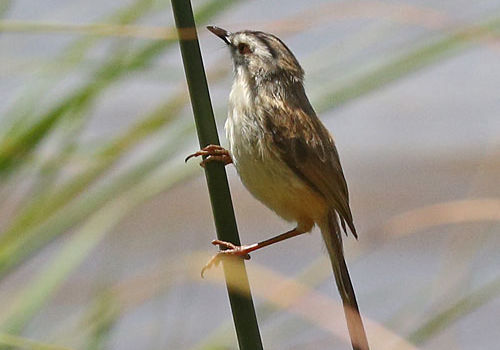
Tawny flanked prinia
Prinia subflavaTawny flanked prinia
Introduction: Tawny-flanked prinias (Prinia subflava) think nothing of living in trees in the winter to forage for invertebrates, but will avoid forests. Tall grass, shrubs and bushes growing along the edges of streams, woodland clearings and rural villages, also attracts this species.
Distribution: Northern Namibia especially in the Oshakati region, Rundu, the Zambezi Region (formerly the Caprivi Strip), the Okavango Delta and the Moremi Game Reserve.
Diet: Eats beetles, flies, caterpillars and grasshoppers, foraged on bare ground between tufts of grass or low down in shrubs and bushes.
Description: A small warbler with a long, graduated tail and short and rounded wings. Upper parts pale greyish-brown with dark brown flight feathers.
Breeding: Both male and female build a pear-shaped to oval nest woven and knitted with strips of grass leaves, often over shallow water or moist ground. Usually 2 to 5 eggs are laid at daily intervals between either July and August, December and January or March and April. The incubation period is 14 days.
Size: 15cm.
Weight: 9g.
Klein Windhoek

